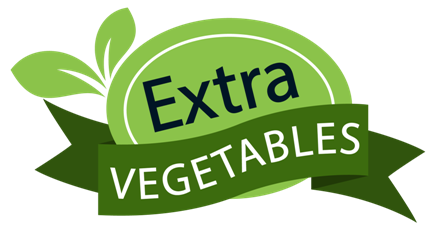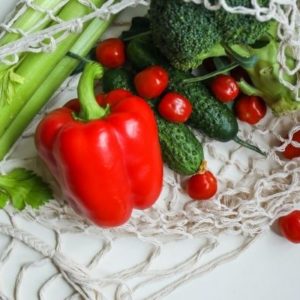Meta description– Wondering how to get perfectly cooked, crispy vegetables every time you sauté? Check out these tricks!

The lost art of home cooking certainly picked up popularity during the pandemic. Even the takeout generation resorted to learning a few tricks or two to cook at home. Some of us even might have set a record in healthy eating-maintaining the right proportion of protein, carbs, and veggies. If you have grown a newfound interest in cooking during the lockdown, now might be the time to perfect that skill. And what better way to start your cooking venture than to learn how to sauté some veggies?
Sautéed vegetables are the ultimate side dish that just goes well with any main course. Besides, it only takes 10-15 minutes to whip up a colorful nutritional plate of veggies for any meal. While the process may sound simple enough, perfecting it is not an easy task. Let’s check out a few tricks to master sautéing vegetables.
The Science of Sautéing
Sautéing is a technique of preparing food with little oil or fat and high heat. The three factors-low fat, high heat, and a shallow pan all contribute to faster cooking and rendering intensely flavorful foods every time. Another important factor is that you need to keep the foods tossed around in the pan so they don’t get burnt. Hence the name sauté (French origin) means “jumping around.” If you have seen chefs tossing foods high above the pan with just a flick of the wrist, just know that’s just not for showing off their skills, rather it’s a very crucial part of sautéing. But unlike stir-frying, there’s no need to constantly stir the food.
Sautéing is not only an easy process for amateur cooks, but it also has some health benefits. As it takes little time to cook, most vitamins and enzymes are retained in your food. Foods that tend to dry out during a longer cooking process are perfect for sautéing. So sautéing enhances the taste of your foods, all the while keeping the nutritional value intact. You can check out pickyeaterblog for some healthy recipes that involve sautéing.
Cut Your Vegetables Evenly
The whole concept of sautéing is to get a crisp outer layer that hides a soft inner texture. To get the texture right, you must pay attention to how you are preparing the ingredients.
For sautéing, all veggies should be evenly cut; even if you are sautéing different vegetables at once, make sure they are cut in similar sizes. This ensures even cooking. If your cuts are larger, by the time it cooks through the outer layer of the vegetable might get burnt. The best way to ensure even cooking is to cut vegetables into bite-size pieces before sautéing.

Let the Pan Heat Up First
If you are one of those people, who throws everything in the pan just after turning on the heat and expects the meal to be ready within minutes, just know there’s no place for impatience in the kitchen. You have to let physics do its job by letting the pan heat up first. Sautéing requires little stove time for the food, if half of that time goes into heating the pan, it will just lengthen their cooking time and you will end up with a pile of overcooked mush.
If you have ever wondered why your foods stick to the pan even after adding tons of oil, it’s because the pan was not preheated. A non-preheated pan tends to draw out moisture from the foods, sticking it to the pan in the process. When you heat a pan it expands, and all its pores open up where oil can seep in. The result is foods that are not sticky and slide easily over the pan.
As for how long you should preheat a pan, there is a simple way to check whether your pan is hot enough for sautéing. After heating the pan on medium-high heat, check if it’s hot enough to sizzle even a few droplets of water. If the water sizzles and skitters, your pan is ready for the process. And that’s just not for sautéing; you should try preheating even when you are scrambling some eggs. When you preheat the pan, the eggs will slide easily without sticking to the pan.
Add the Right Amount of Fat
Adding too much fat can fry your foods instead of sautéing. Just coat the bottom of the pan with fat (oil, butter, or ghee) so the foods can easily glide over the pan. To avoid vegetables sticking to the pan, make sure the pan is evenly coated with fat. Some vegetables (onions) can release moisture when heated; in that case, you need less fat in the pan.
Add the Aromatics Before the Vegetables
Adding aromatics is a good way to infuse more flavor into your sautéed vegetables. There’s a world of difference between food that has aromatic ingredients and food that doesn’t have any.
In terms of flavor, you can go as fancy as adding fennel, ginger, bay leaves, or thyme, or keep it basic with some onions and garlic. Try not to put in the garlic first. It only takes a minute for minced garlic to be sautéed. If you add it first, there’s a good chance that you will end up with some burnt garlic. Throw in the onion first, let it soften up a bit, and then add the garlic.
Overcrowding Is a Big NO
You might’ve already heard it countless times-don’t overcrowd the pan while cooking. Well, this is even more true for sautéing. The direct contact between food and a hot oiled pan is what brings all the magic in sautéing, so if you are putting in too many ingredients at one go, you are not letting the food be in contact with the hot surface. Even if you toss and stir, some portion of your food just won’t be cooked enough.
On top of it, overcrowding lowers the heat that needs to be in place for sautéing. As a result, you don’t get the crispy outer layer in your foods. The moisture trapped inside the food doesn’t get a chance to vaporize and the food is steamed, making it mushy or soggy.
To be on the safe side, put enough ingredients that can be laid out in the pan with each piece being in direct contact with the pan. If you are sautéing a large portion, try to cook it in batches.
Sautéing Different Vegetables Together
Sautéing different veggies is more fun than having just one item in the pan. Just remember to put in the items that will take longer to cook first. Once it gets a little cooked, add the remaining items.
Similar to this, add the softer vegetables that take little to no time to cook (tomatoes, zucchini, spinach, or squash) during the very last part of sautéing. Otherwise, being on the high heat for much longer will only make them soggy or mushy.
What Are the Best Veggies for Sautéing?
As has been mentioned before, sautéing is a simple, brief process. So pick vegetables that are naturally soft and tender; preferably mushrooms, cauliflower, broccoli, zucchini, peppers, green beans, or asparagus. Picking tender vegetables for sautéing will speed up the cooking process. Carrots, sweet potatoes, Brussels sprouts, and corn are some other vegetables that work well.
Some denser or tougher vegetables are also fit for sautéing, but you need to be a little tricky about it. If you want to sauté tougher vegetables (beets or bamboo shoots), you might want to consider boiling or blanching them before sautéing. Without blanching first, there’s a high chance of ending up with uncooked or even burnt vegetables.
Steaming before sautéing is another method worth trying. But make sure you get rid of all the moisture from the vegetables before throwing them into the hot oil. Water and hot oil are not a combination you want while cooking.

How Long Does It Take to Sauté Vegetables?
Vegetables have different cooking times. Hard veggies like carrots, potatoes, winter squash, or beets will take about 10-15 minutes to get sautéed. Soft veggies like squash, zucchini, or tomatoes will take just about 3-5 minutes of stove time. Medium-dense vegetables like onions, celery, scallions, and shallots will take about 6-8 minutes of cooking time.
The timing, however, ultimately depends on the size of your vegetable cuts. The smaller the pieces, the faster they will get cooked and vice versa.
The Bottom Line
Sautéing is just finding the right combination of heat, fat, and foods. Unlike other cooking methods, it’s faster and yields great taste with little effort. On top of that, its versatile veggies, chicken, and fish all can be sautéed following a similar process. To take your culinary skills up a notch, follow the above-mentioned tips and learn how to sauté properly. As a last word of advice, try to avoid sautéing frozen veggies. Sautéing is all about texture and flavor. And only fresh veggies can render that unique texture for you. If you are looking for the right texture, frozen veggies might not cut it for you.
Read More: Are potatoes a vegetable or fruit?

